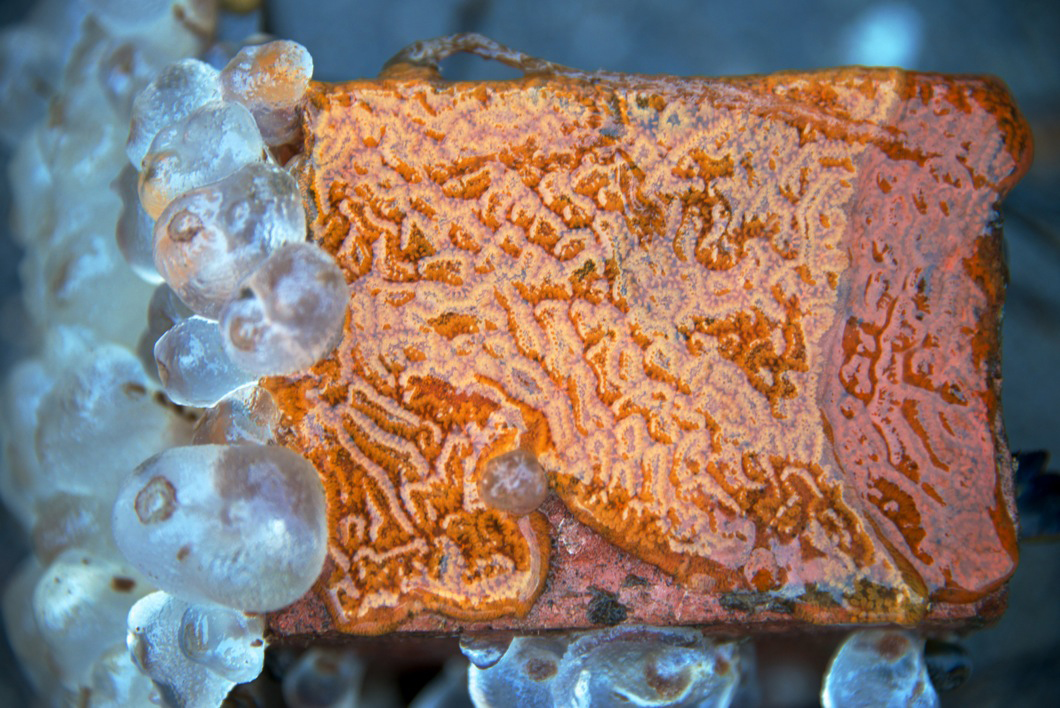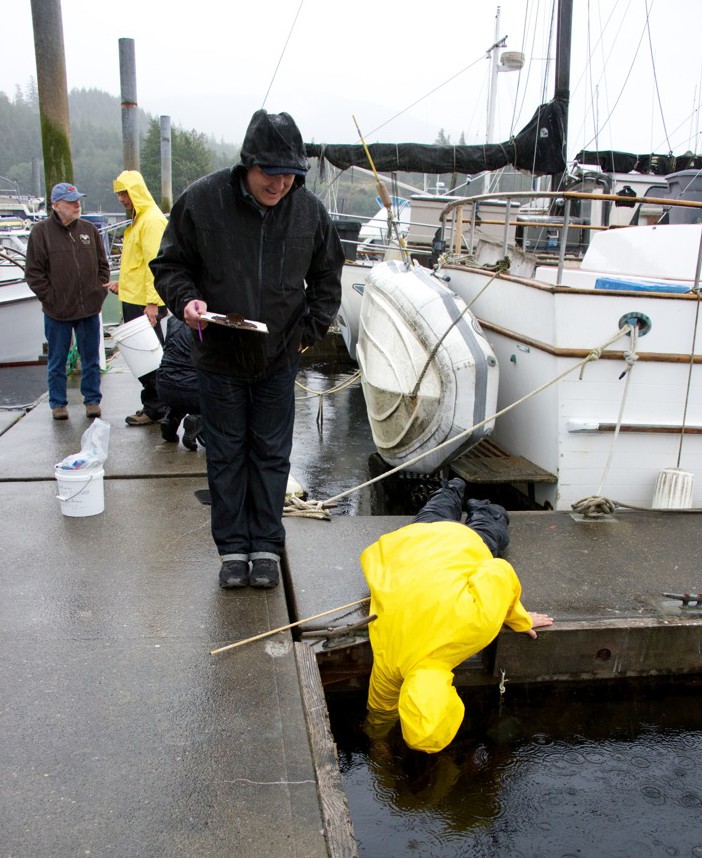by Monaca Noble, Kristen Larson, Linda McCann and Ian Davidson
Video: Biologists place pennies underwater to test how well volunteers can spot small invaders
What is the Bioblitz, and why would researcher Linda McCann cash in her dollar bills for hundreds of pennies in preparation for it?
A Bioblitz is an intensive survey in which trained volunteers head out en masse to catalog species in a specific area. On September 28, volunteers in Ketchikan, Alaska, joined staff from the Smithsonian Environmental Research Center (SERC), San Francisco State and the University of Alaska to search for invasive marine species along Ketchikan’s waterfront. The Marine Invasive Species Bioblitz in Ketchikan had three goals: to engage and teach the public about invasive species, detect newly arriving species that threaten Alaskan coastal waters, and recruit these enthusiastic volunteers for future monitoring efforts.
To prevent invasive species from damaging the environment (and the economy), they must be found early, when populations are small enough to control. A great example of early detection aided by citizen science was the discovery of the invasive tunicate Didemnum vexillum (sometimes called D.vex or “rock vomit”) during the June 2010 Bioblitz in Whiting Harbor, Alaska. This small embayment is the only known locality of the invader in the state, making the likelihood of eradication in Alaska more feasible than it was at other locations. Several agencies sprang into action, developing and implementing a rapid response plan for the tunicate (see the December 2010 Feature Story for more). In addition, researchers from SERC got to work on methods to eradicate the tunicate from Whiting Harbor.
This year’s Bioblitz was a collaborative effort of several groups, including SERC, San Francisco State University’s Romberg Tiburon Center, the Alaska Sea Grant Marine Advisory Program, and the University of Alaska Southeast. On a rainy Saturday morning, 28 blitzers arrived at the University of Alaska’s center in Ketchikan. They began their day with a half day of training, including lectures and hands-on lab work. Their training enabled them to identify some key species that have recently invaded the West Coast and may be able to hitch a ride to Alaska on recreational and commercial vessels. Species targeted included solitary tunicates Ciona intestinalis, Ciona savignyi, and Styela clava; colonial tunicates Didemnum vexillum, Botryllus schlosseri and Botrylloides violaceous; bryozoans Watersipora subtorquata and Bugula neritina; and the seaweed Undaria pinnatifida, all possible or known Alaskan invaders. After the training, most volunteers joined the bioblitz field crew to carefully survey for these species at a marina in Ketchikan.

A native tunicate (clear sea grape Corella) and invasive tunicate (Botrylloides) growing side by side on a brick in Ketchikan Harbor. (Deborah Mercy)
This brings us to the pennies. To test the accuracy and the precision with which the volunteers could spot new, sometimes small, invaders from a plethora of species growing on the docks and pilings, SERC researchers also glued about 150 pennies to the sides of the docks. While surveying the dock for invasives, the blitzers were asked to count how many pennies they found inside their search areas. Participants embraced the additional challenge of finding the pennies and–despite the cool, wet weather–dove into their surveys with great enthusiasm.
The pennies, however, might have been a bit too cryptic. Most volunteers (and even SERC researchers!) had difficulty seeing the pennies. The exercise showed how difficult small invaders are to detect, even when you know what to look for. Everyone can identify a penny, but that doesn’t make them easy to spot! Despite the pennies, the Bioblitz was a great success. One teacher even signed up her class to assist with our long term monitoring efforts in the state through the Platewatch Program.
As these volunteers learned, early detection requires a lot of hard work and training. Even with the proper training, penny-sized invaders are hard to spot. For this reason it is very important to prevent the spread of invaders in the first place. Hull fouling is one of the primary ways in which marine invasive species, such as tunicates and other fouling organisms, are spread. Making sure that you clean the bottom of your boat before traveling outside of your home port is an important way that you can help stop the spread of these invaders. For more on our research on hull fouling, including surveys of boats in Ketchikan, see the October and November 2012 Feature Stories.


